MÉMOIRE
ÉVIDEMENT ÉVIDEMMENT, 2022- 2023.
Mémoire. 152 pages.
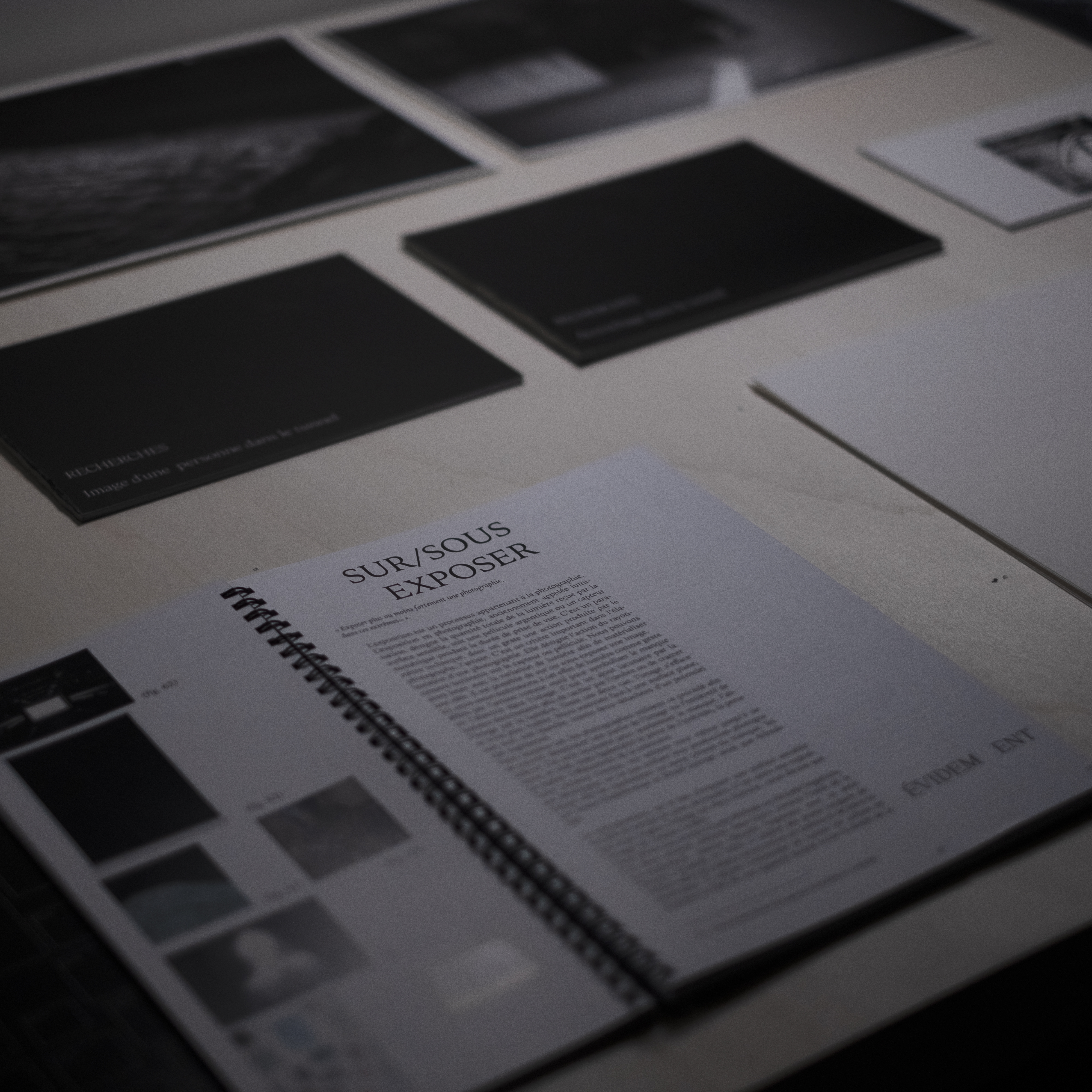
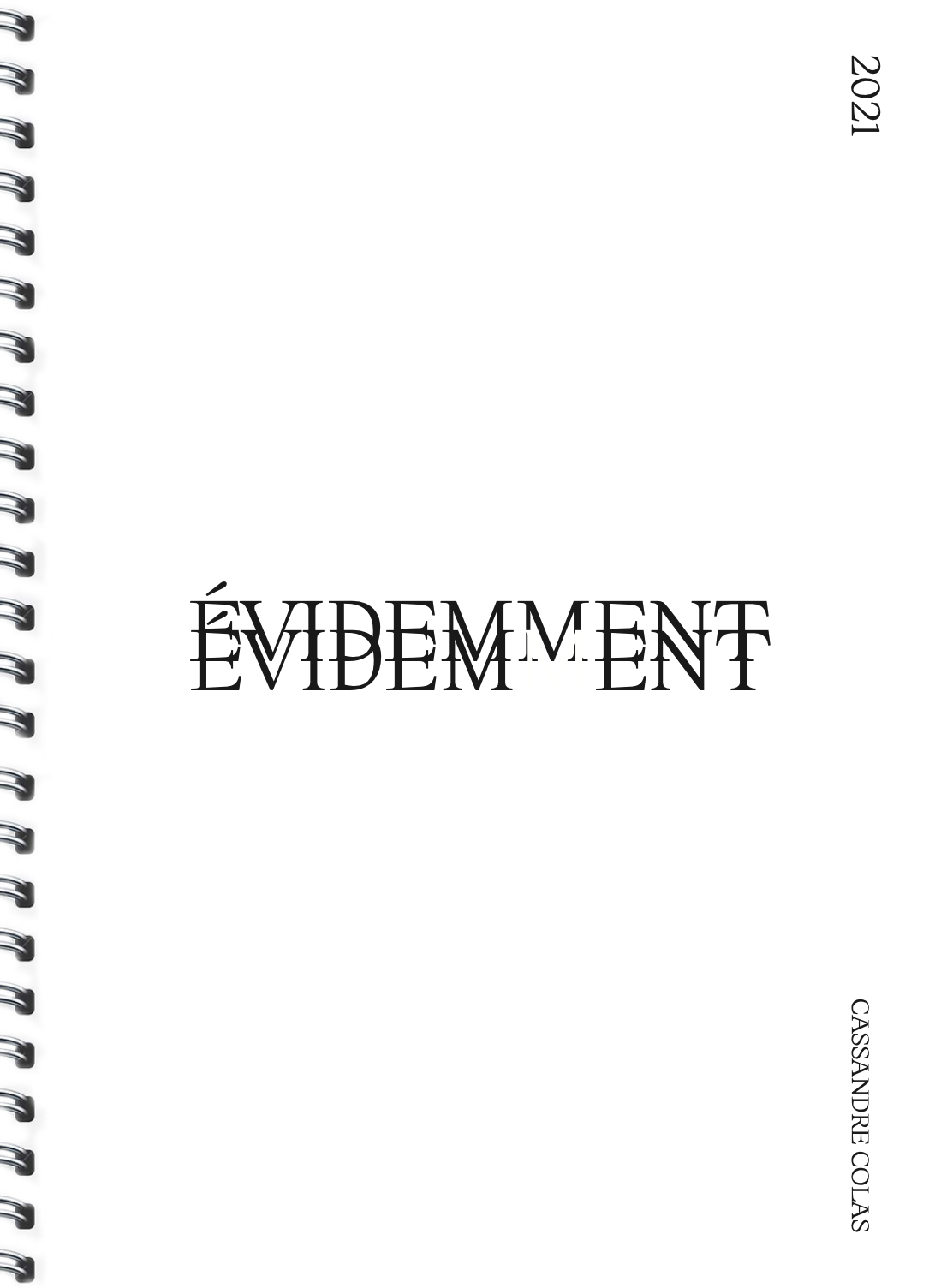



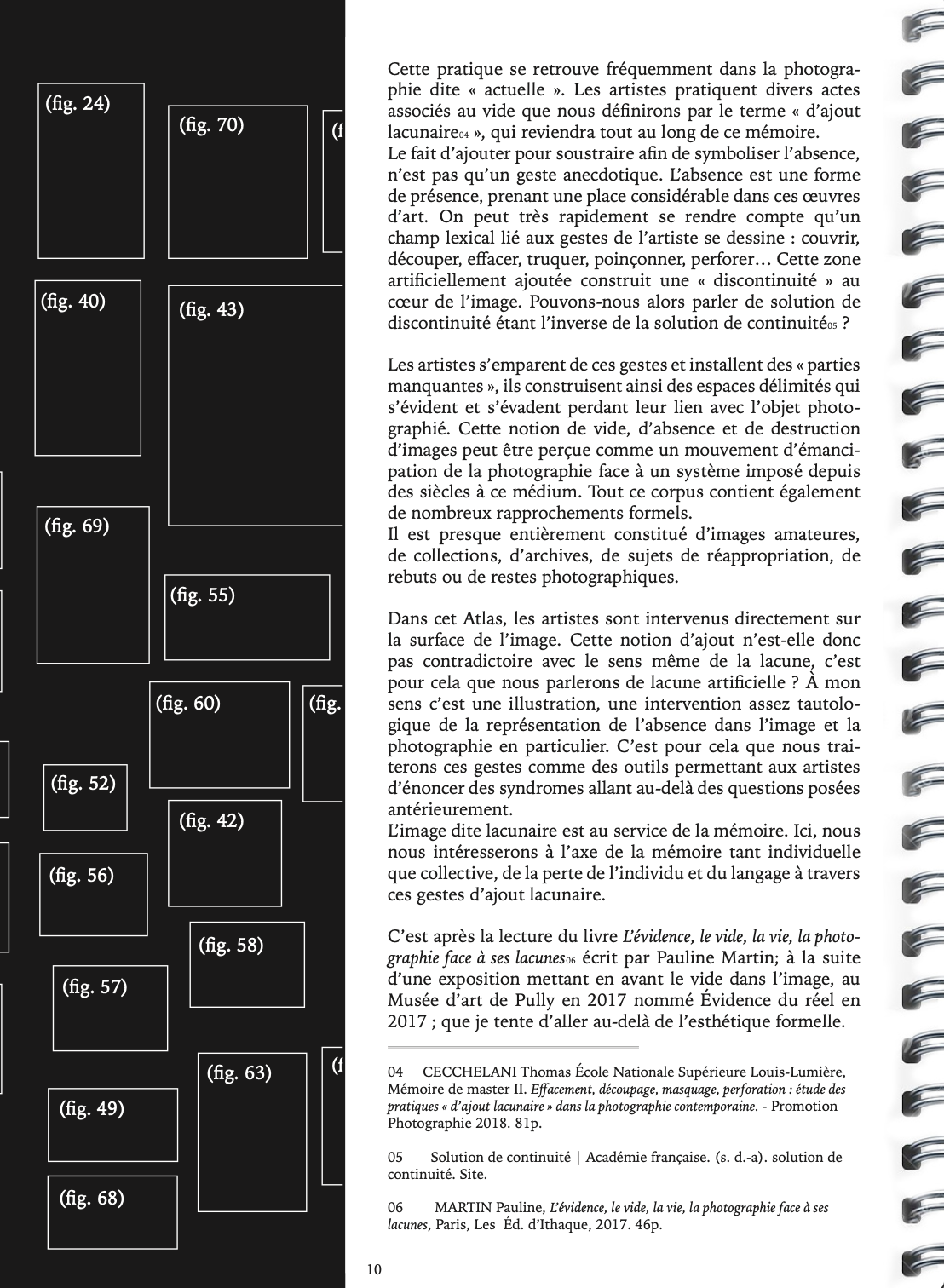
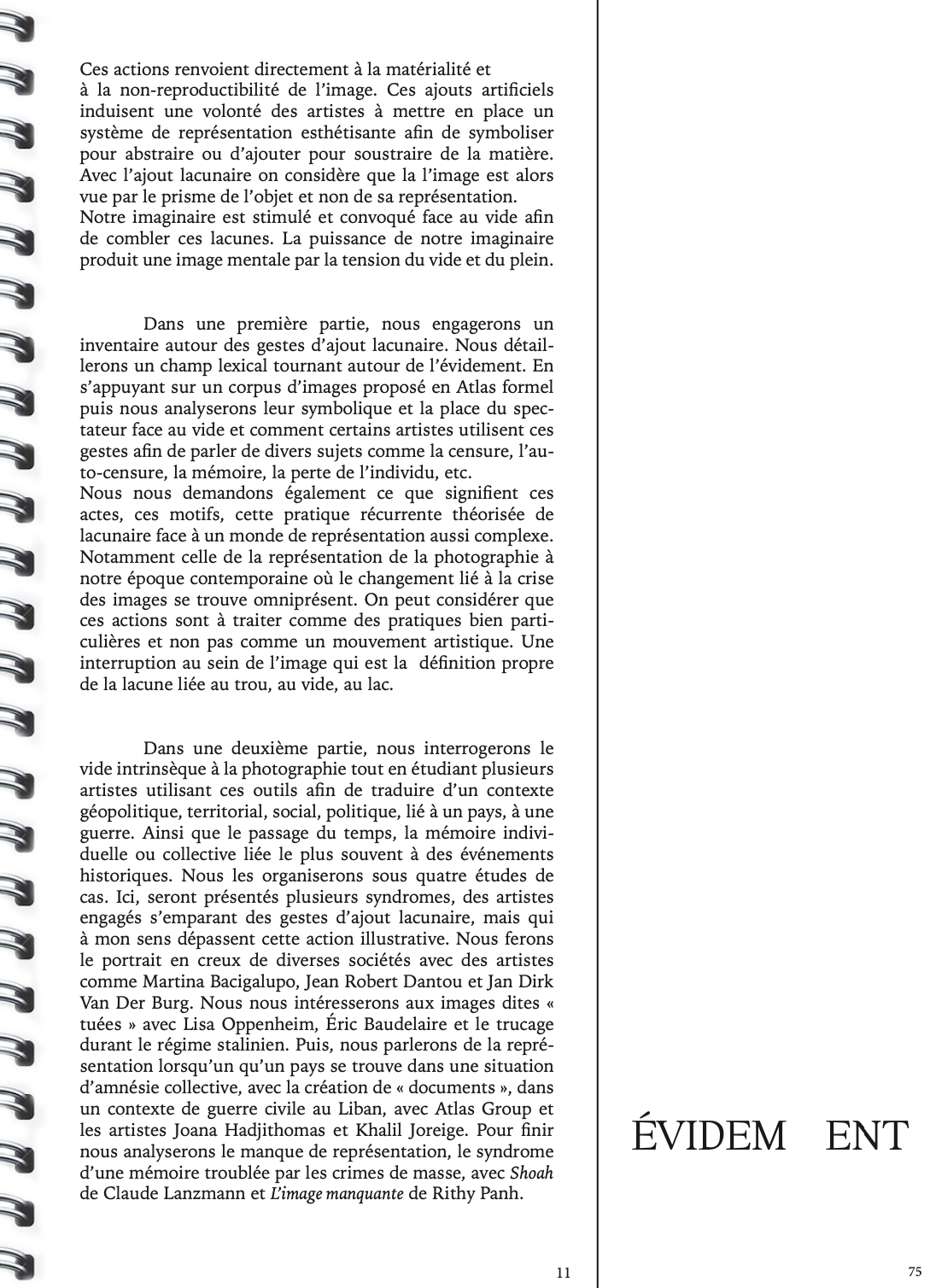
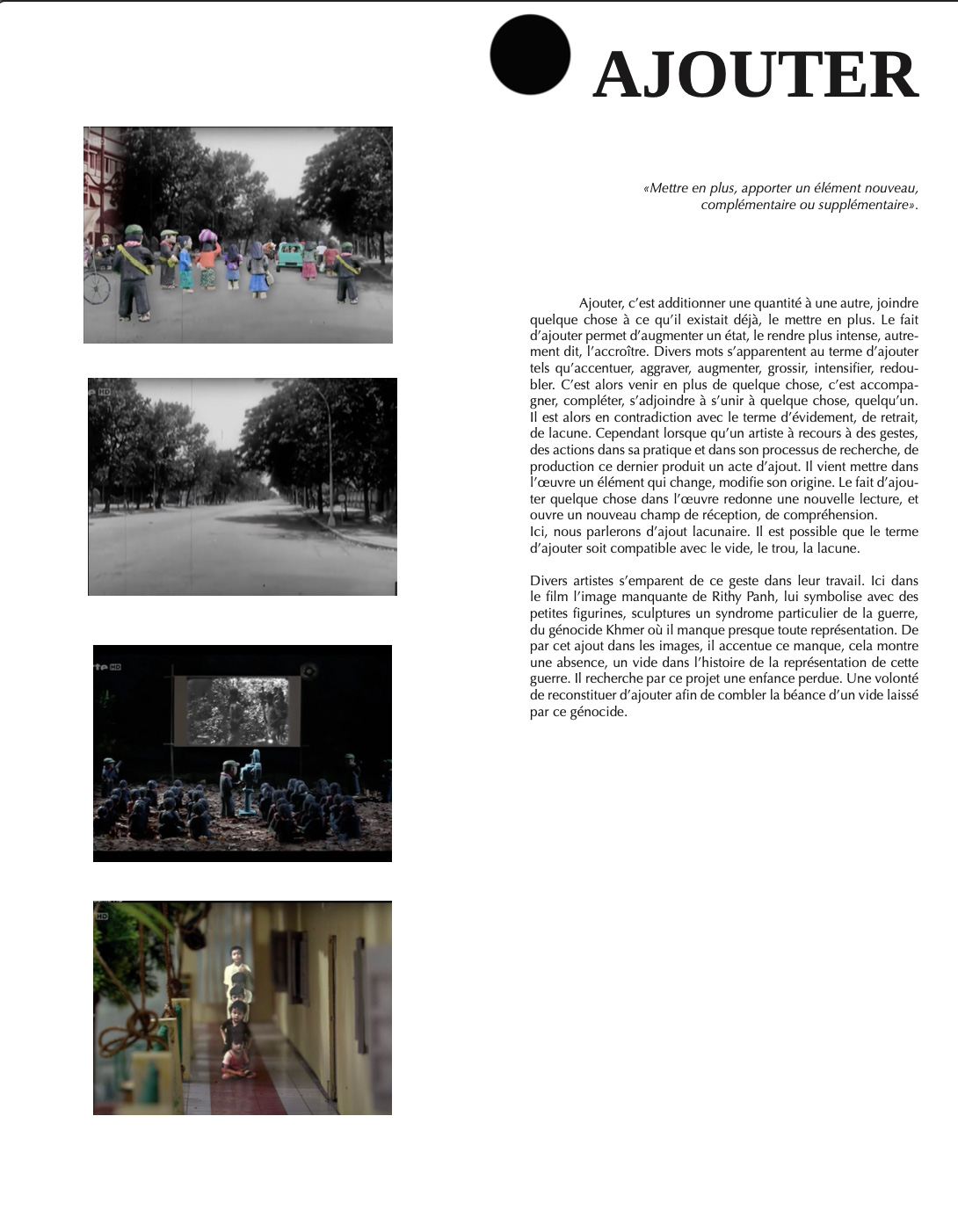
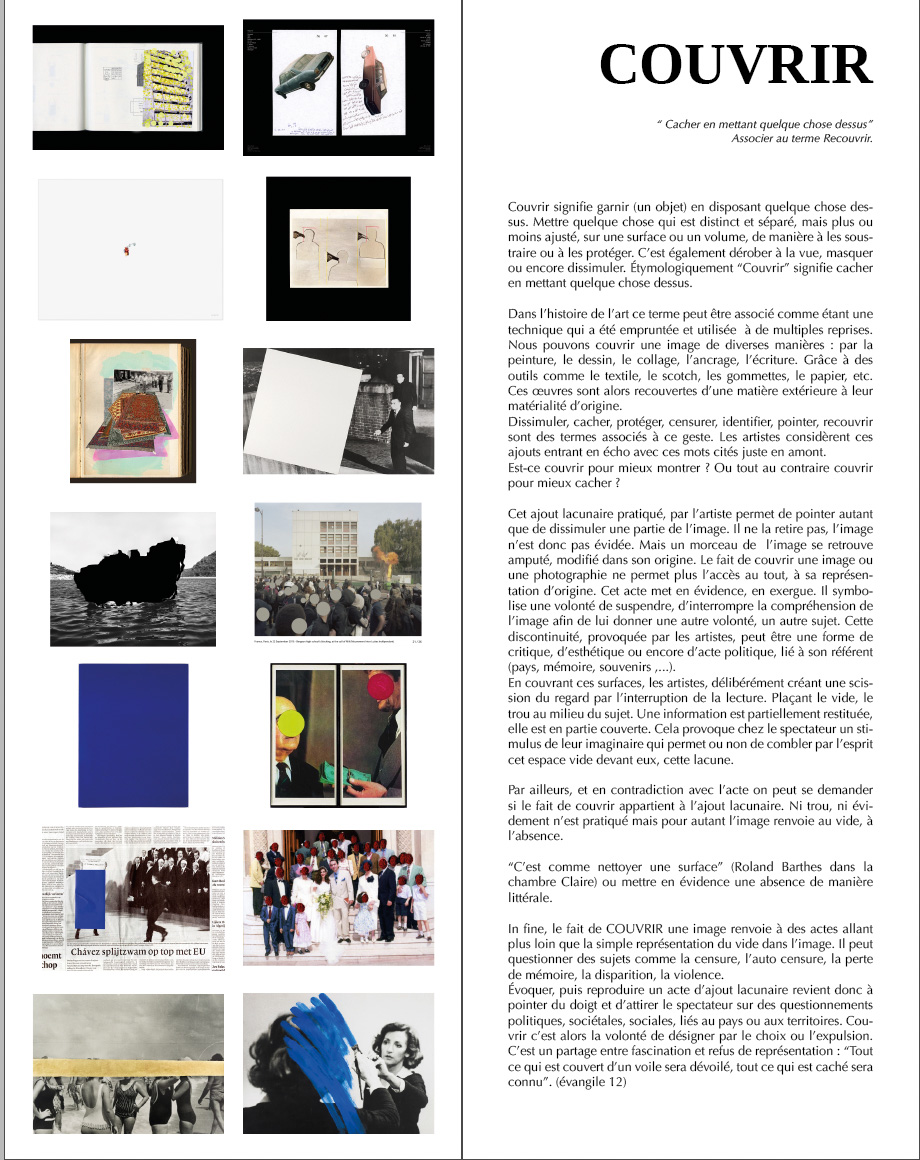
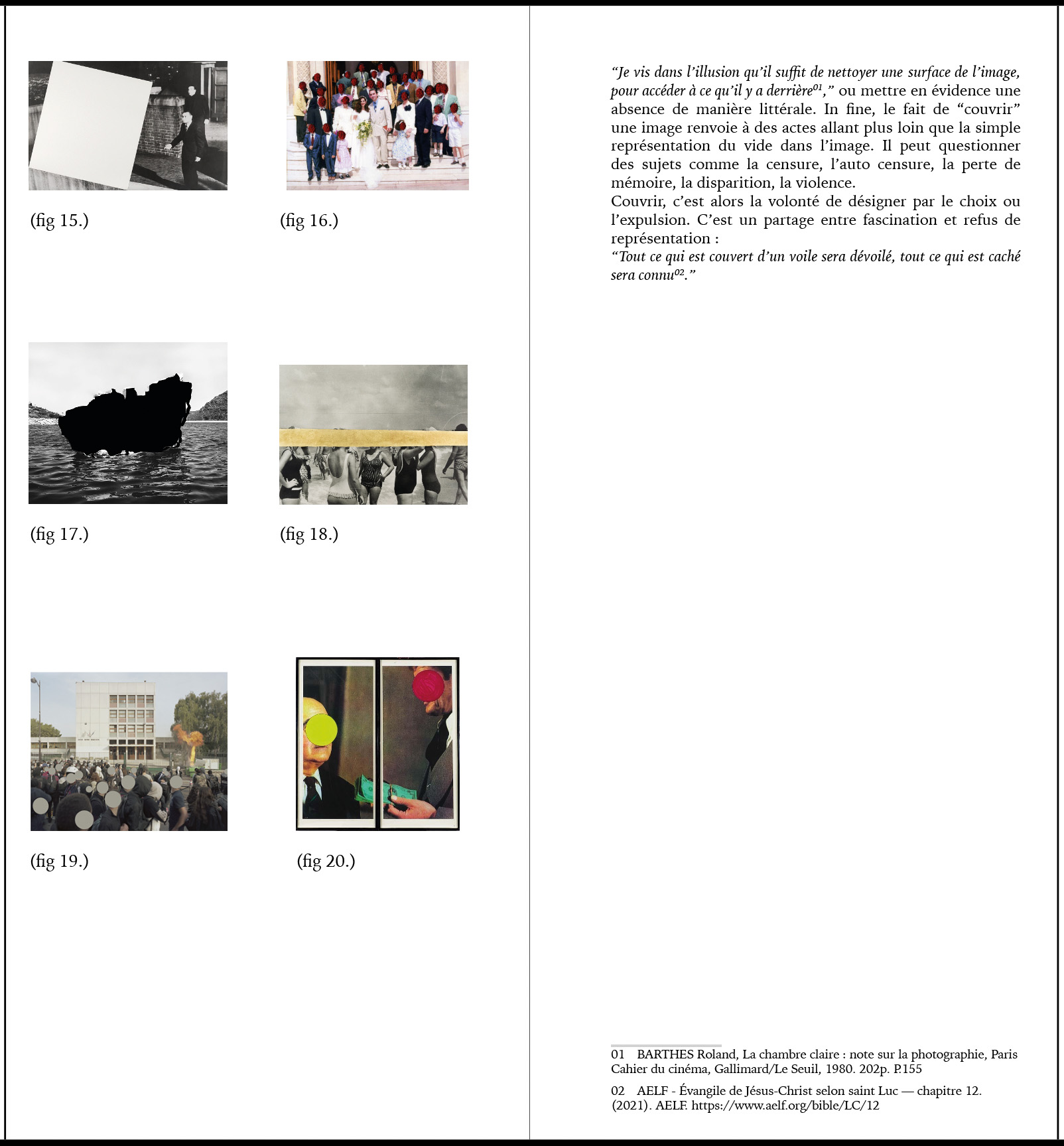

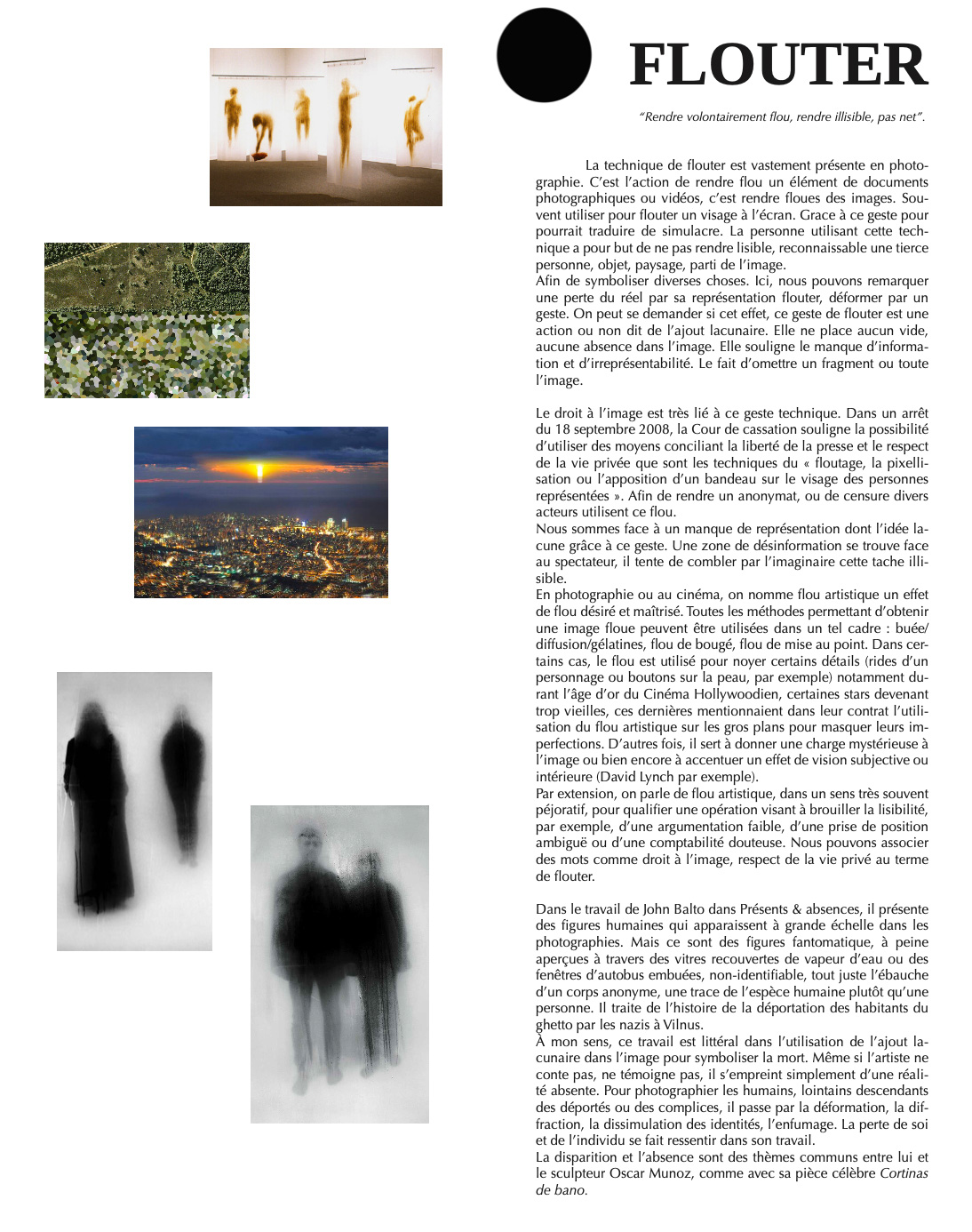



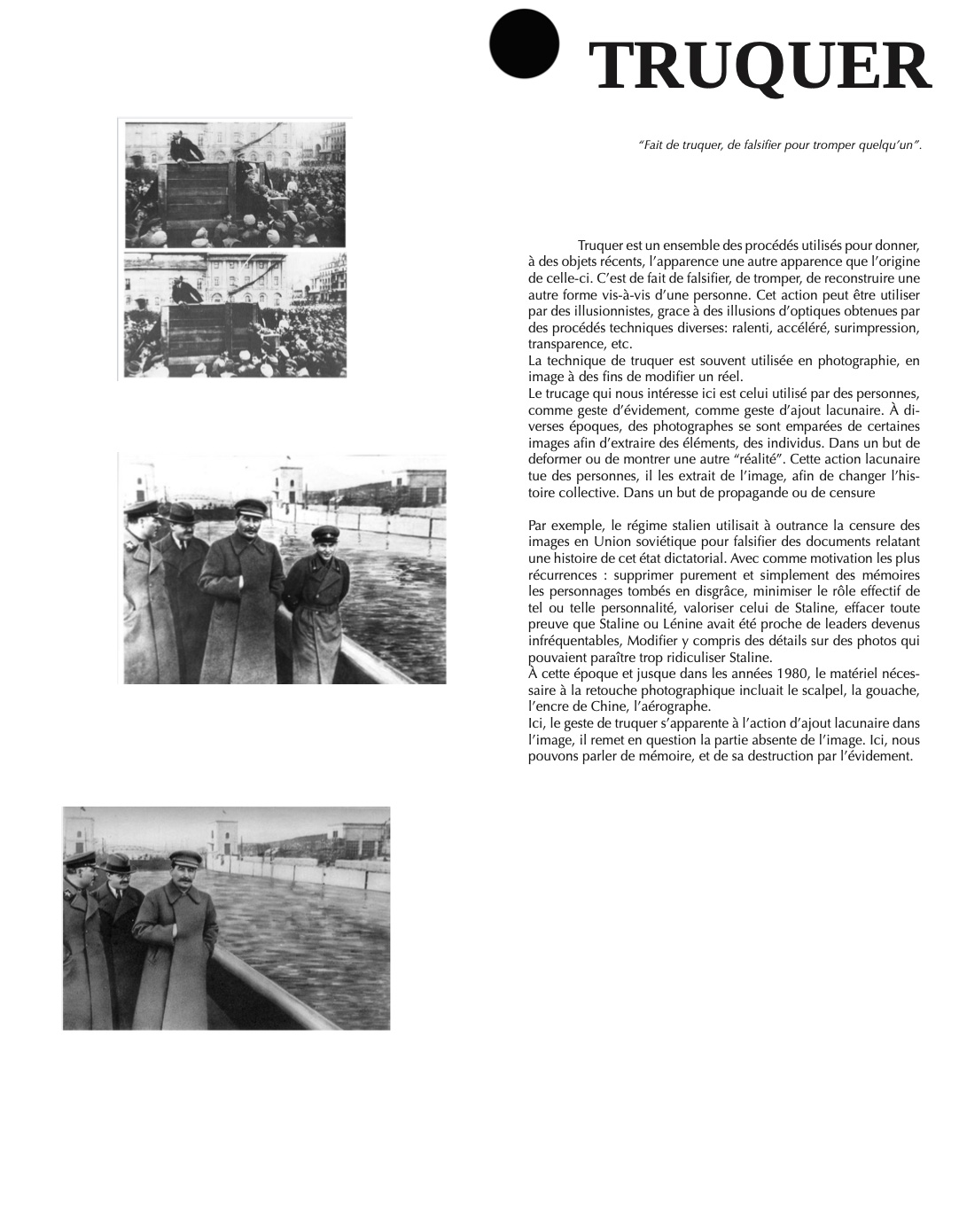
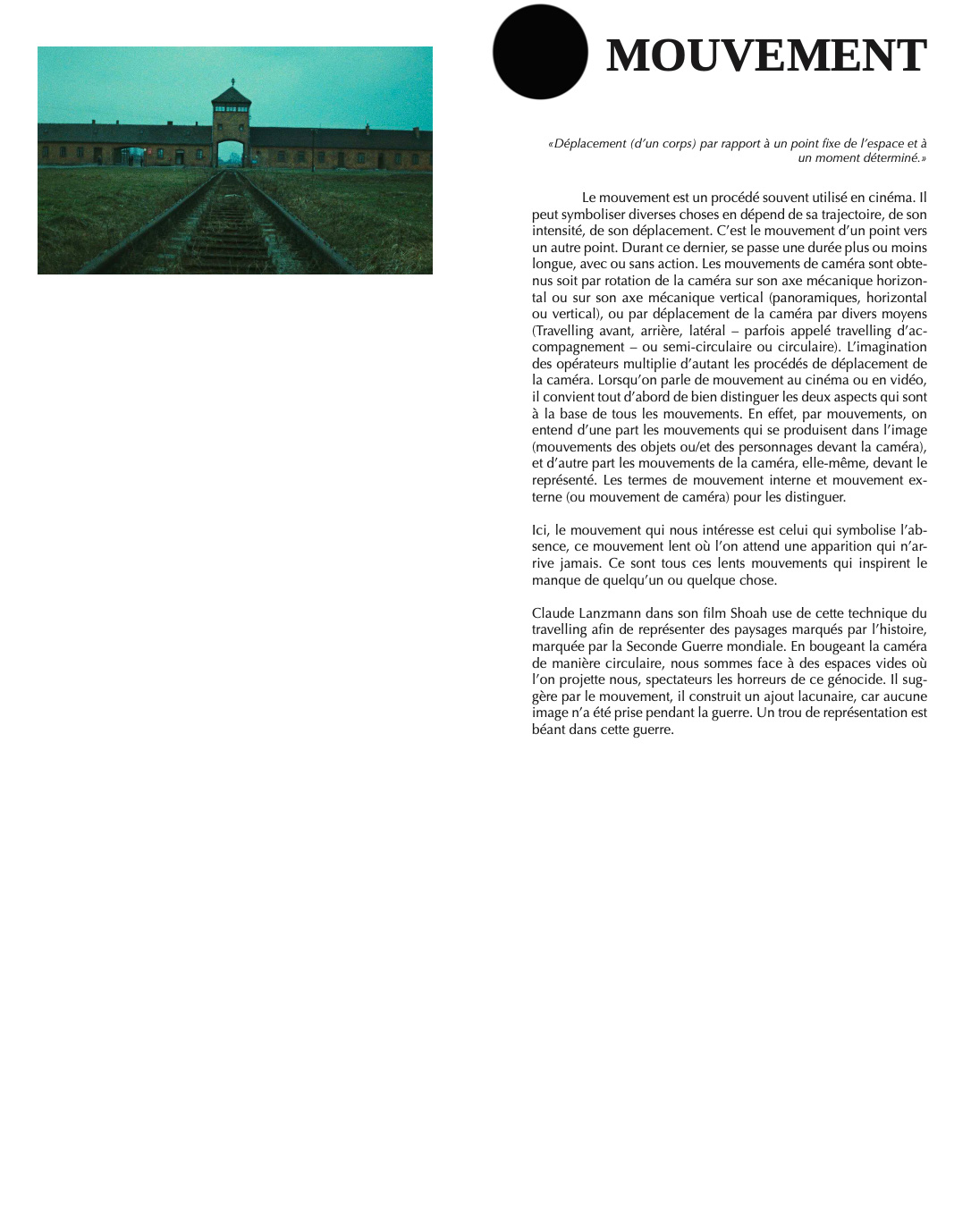
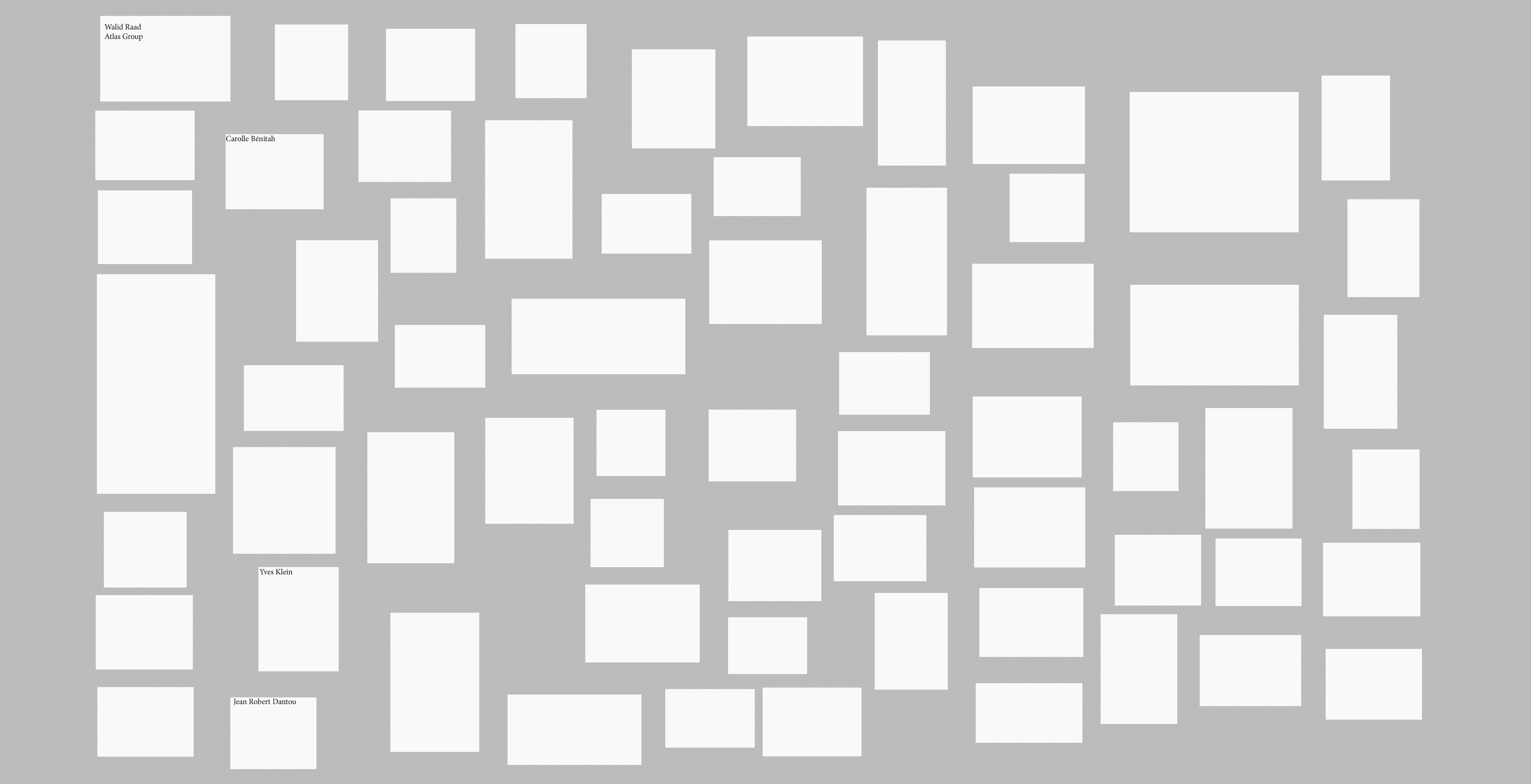


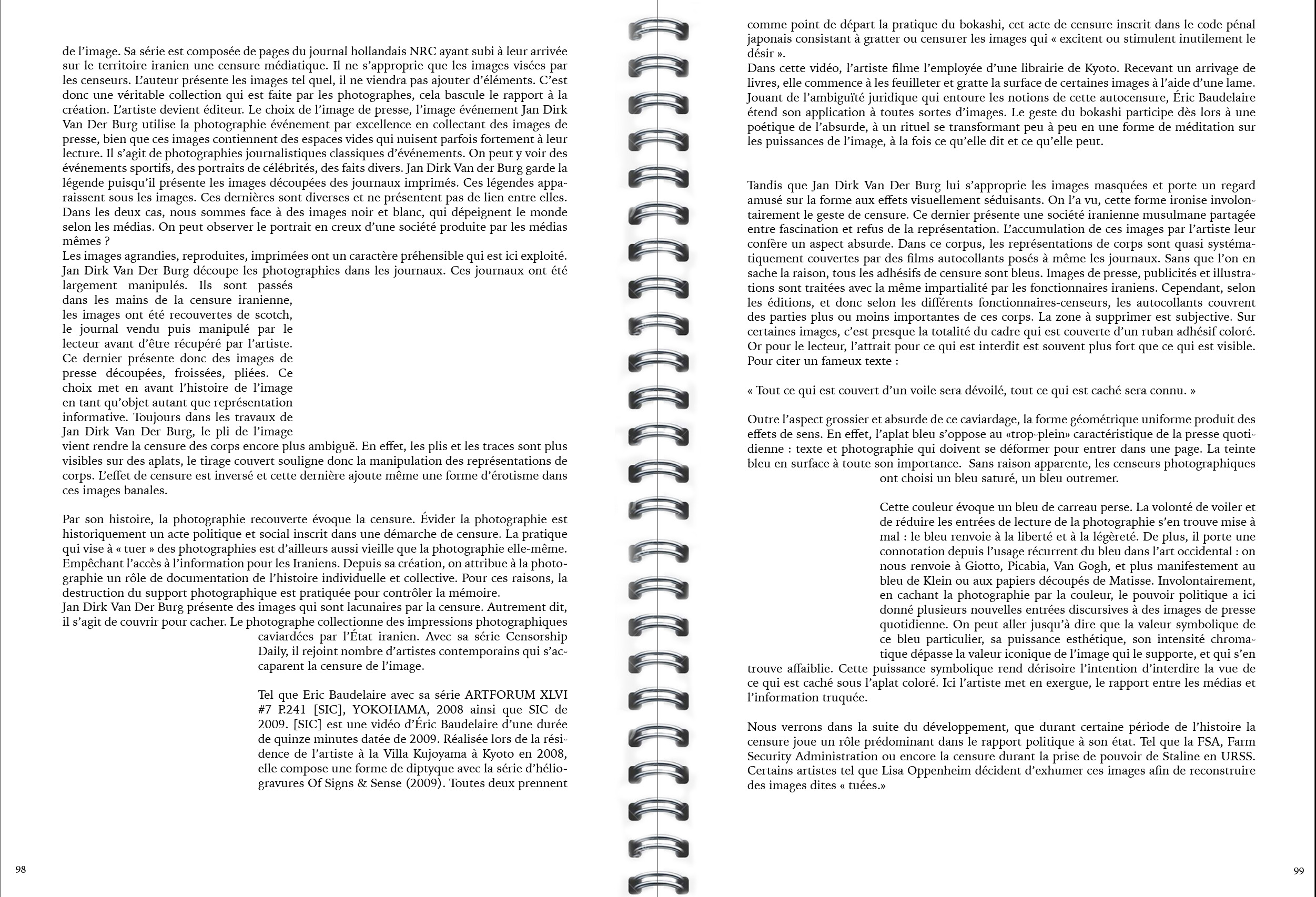

« La lacune est un espace vide, associée à l’interruption ou à l’absence. Couramment, elle désigne le manque d’un objet concret ou virtuel semblant être nécessaire. Elle est toujours en rapport direct avec le référent ». Cette recherche a débuté autour du geste d’ajout lacunaire dans la photographie et l’art contemporain. Après avoir collectionné un atlas d’image montrant en leur centre un trou, un vide, une lacune formelle et visuelle, nous avons dégagé divers termes liés à l’utilisation de ces gestes d’artistes : ajouter, brûler, couvrir, découper, perforer, poinçonner, fragmenter, flouter, omettre, mouvement, truquer, etc. Ce phénomène « d’évidement » est emparé par les artistes qui installent des parties manquantes dans l’image, ils construisent ainsi des espaces délimités qui s’évident et s’évadent perdant leur lien avec l’objet photographié. Cette notion de vide, d’absence et de destruction d’image peut être perçue comme un mouvement d’émancipation de la photographie face à un système imposé depuis des siècles à ce médium. Notre imaginaire est stimulé et convoqué face au vide afin de combler ces lacunes. La puissance de celui-ci produit une image mentale par la tension du vide et du plein. Les gestes d’ajout lacunaire produisent une symbolique et certains artistes utilisent ces actions afin de parler de divers sujets comme la censure, l’autocensure, la violence, la mort, la perte de l’individu, la perte de parole, etc. Afin de traduire d’un contexte géopolitique, territorial, social, politique, lié à un pays, à une guerre. Ainsi que le passage du temps, la mémoire individuelle ou collective liée le plus souvent à des événements historiques. Les études de cas portent sur le portrait en creux de société, l’image tuée, la représentation face à l’amnésie collective au Liban, et l’image manquante dans les crimes de masse. »
︎︎︎English version
Dissertation. 152 pages.
"A lacuna is an empty space associated with interruption or absence. It commonly refers to the lack of a concrete or virtual object that seems to be necessary. It is always directly related to the referent.
This research began with the gesture of lacunar addition in photography and contemporary art. After collecting an atlas of images showing a hole, a void, a formal and visual lacuna at their centre, we identified various terms related to the use of these artists' gestures: adding, burning, covering, cutting out, perforating, punching, fragmenting, blurring, omitting, moving, fudging, etc. This phenomenon of 'hollowing out', or 'hollowing out', is one of the most common forms of addition in contemporary art. This phenomenon of "hollowing out" is seized upon by artists who install missing parts in the image.
In this way, they construct delimited spaces that are self-evident and escape, losing their link with the object photographed. This notion of emptiness, absence and the destruction of the image can be seen as a movement to emancipate photography from a system that has been imposed on the medium for centuries.
imposed on the medium for centuries. Our imaginations are stimulated and summoned to fill the void. The power of the void produces a mental image through the tension between full and empty. The gestures of adding lacunae produce a symbolism, and some artists use these actions to talk about various subjects such as censorship, self-censorship, violence, death, the loss of the individual, the loss of speech, and so on. In order to reflec of a geopolitical, territorial, social or political context, linked to a country or a war. As well as the passage of time and individual or collective memory, often linked to historical events. The case studies focus on the social portrait, the killed image, representation in the face of collective amnesia in Liban, and the missing image in mass murders.